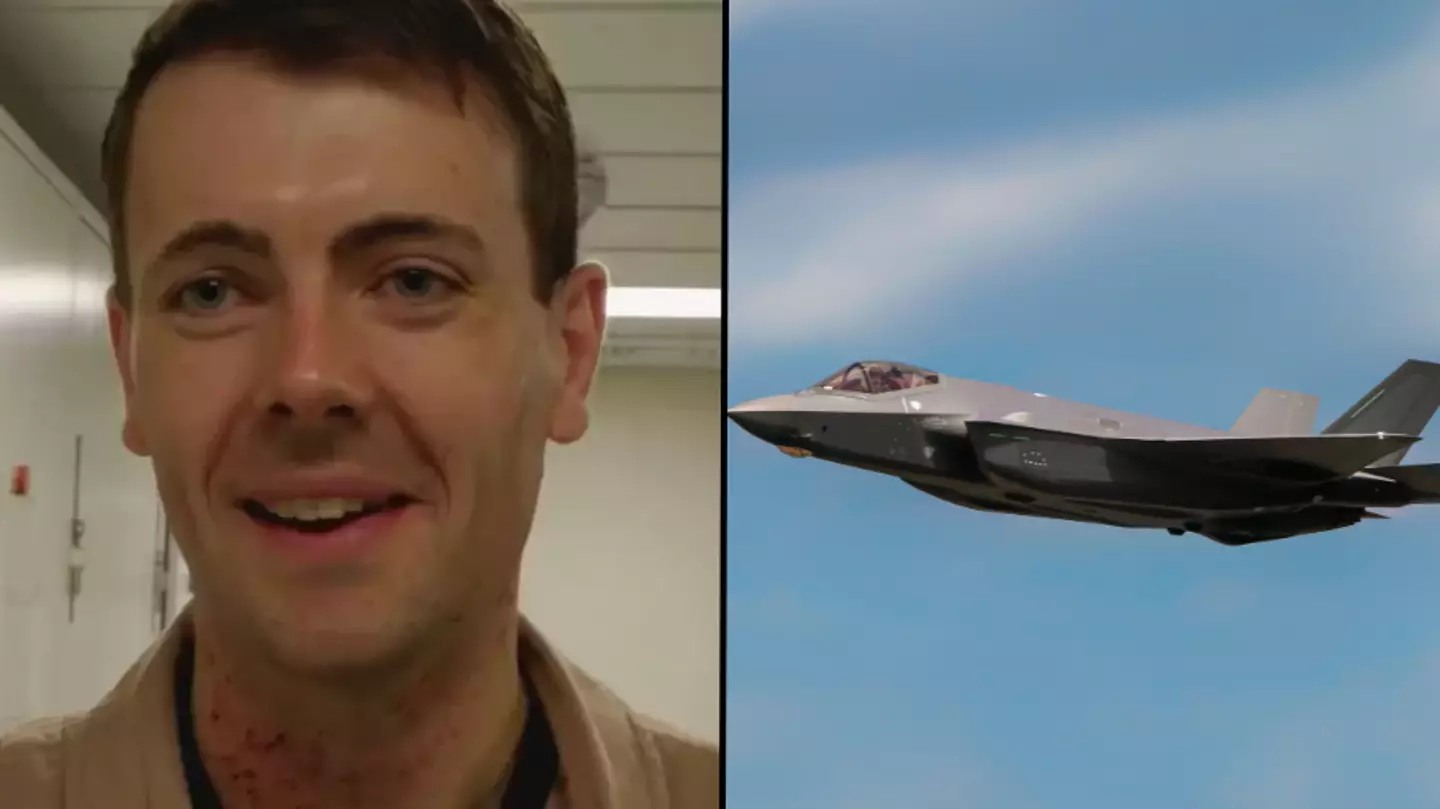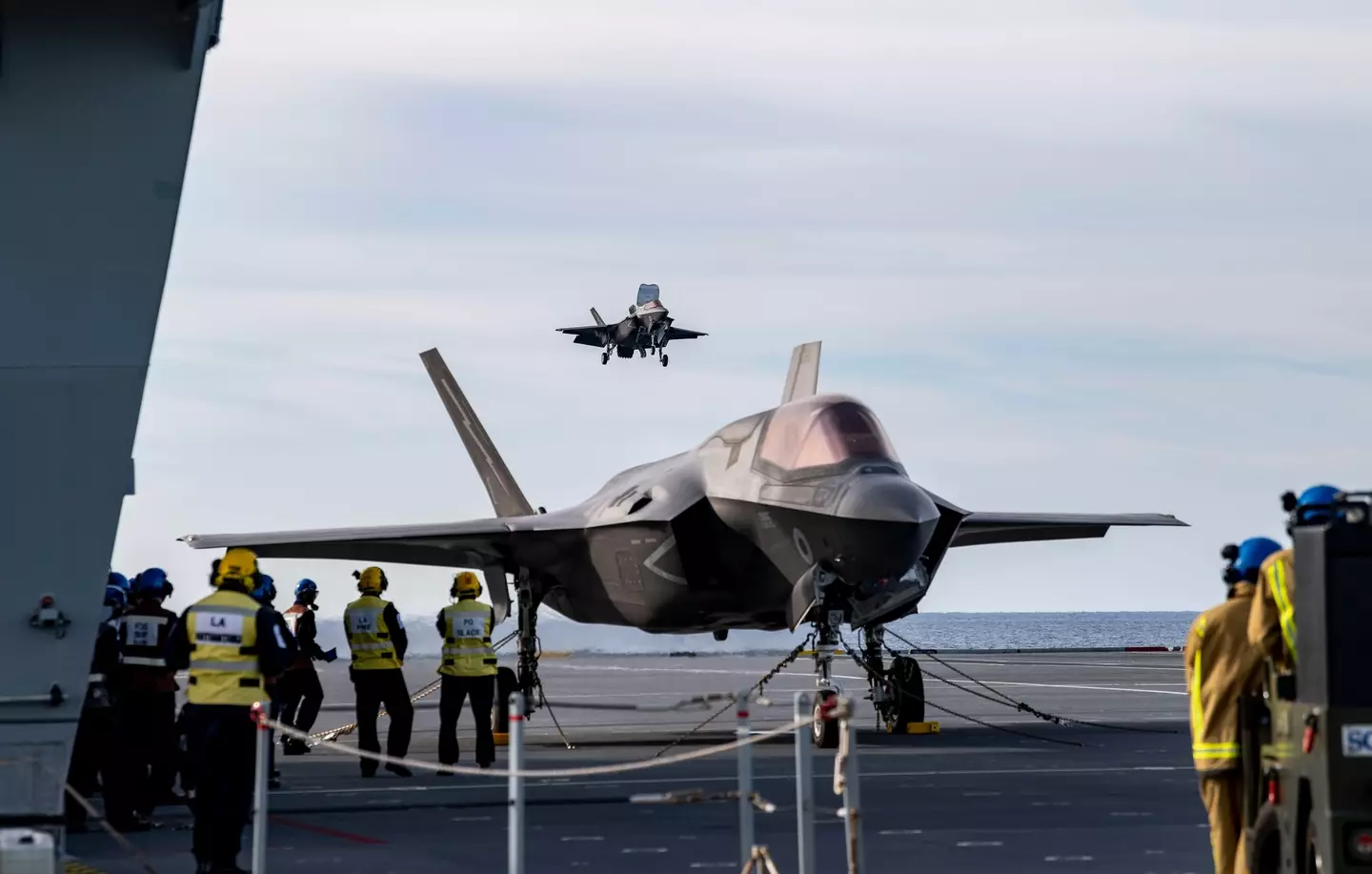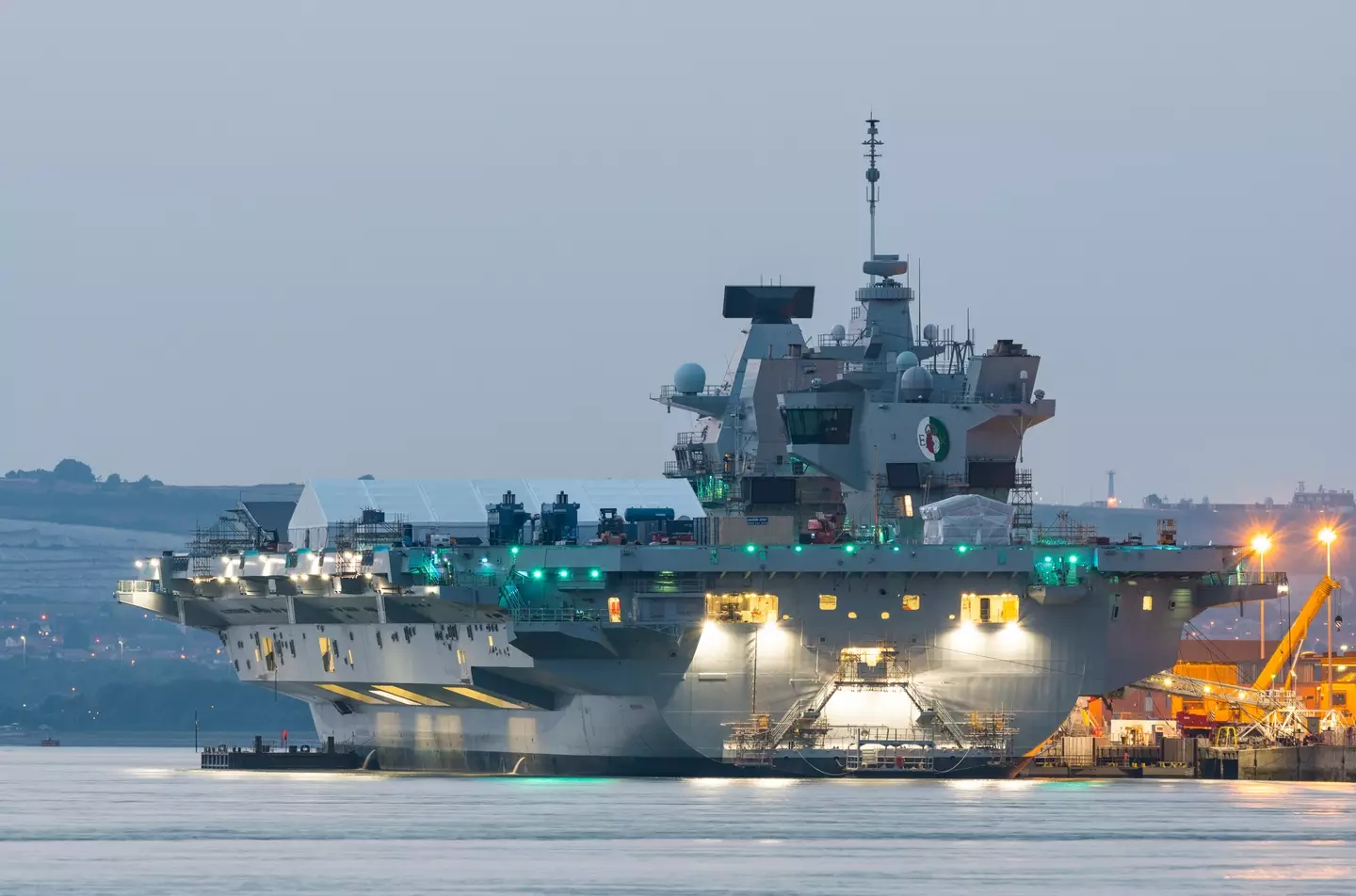
A pilot has described the moment they had to eject from a £100 million fighter jet to avoid being caught up in a potentially deadly crash.
In November 2021 the Royal Navy aircraft carrier HMS Queen Elizabeth was conducting flying operations in the Mediterranean Sea when disaster struck.
One of their hugely expensive F-35 fighter jets was taking off from the carrier when the plane failed to become airborne, instead tipping off the edge of the ship and crashing into the sea.

Advert
Luckily for the pilot, known as Hux, they were able to eject from the plane moments before disaster and they have described exactly what it was like in those seconds running up to the crash.
He spoke about his experiences as part of the BBC's documentary The Warship: Tour of Duty, which has followed the maiden voyage of the HMS Queen Elizabeth.
In the documentary Hux explained that the jet suddenly lost acceleration while he was attempting to take off, with the plane losing speed vital to become airborne.
He said: "I tried for emergency power - that didn't work, then I tried to slap on the brakes - that didn't work either… so I kind of knew it was going to roll off the ship."
Hux credits his survival to a mixture of good luck and the wondrous invention that is the ejector seat, though his quick thinking in using it in time also helped.
Advert
The pilot was able to eject and parachute back down onto the deck of the aircraft carrier, though landed safely by just a few feet.
If he had ejected just a few seconds later he could have ended up landing in the water right in the path of the aircraft carrier and been sucked beneath the waves by it.

A report into the jet fighter's crash into the sea found that the incident was most likely caused by human error rather than a technical fault, with an official investigation finding that a cover had not been removed from one of the engine intakes.
The left handed 'blank' or cover remained over the engine intake which had the result of 'reducing the engine power' enough that the plane couldn't take off.
Advert
According to the report the jet itself was successfully salvaged after the crash.
This is not the only time a pilot has had to eject from an F-35 jet as over in the US one of the planes coming in to land at Fort Worth, Texas suddenly tipped onto its nose and started billowing smoke.
The plane then spiralled out of control, with the pilot ejecting and parachuting to safety.